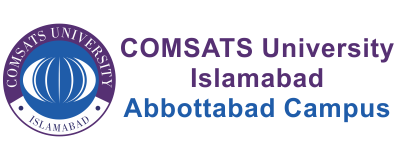At the Earth Sciences Department, we have the following Laboratories and Equipment:
- Geology Museum
- Mineralogy/ Petrology Lab
- Thin Section Lab
- Photomicroscope Lab
- GIS Lab
- Tectonic Lab
- Dendrochronology Lab
- Central Analytical Research Lab
- Applied Chemistry
- Radiation Physics Lab
- Resistivity meter
- Magneto meter
Geology Museum
The Physical Geology Lab and Museum is equipped with samples of rocks, minerals, and fossils. All three categories of rocks, igneous, sedimentary, and metamorphic are displayed along with samples of metallic and non-metallic minerals. Geological, tectonic, seismicity, and concession maps of petroleum exploration are displayed in the lab for an overview of the geology of various regions of Pakistan and hydrocarbon exploration. As such this lab serves as a first stop to learn about the dynamic earth and geology of Pakistan.
Mineralogy/Petrology Lab
Mineralogy/Petrology Lab is equipped with polarizing microscopes and zoom stereoscopes, standard rocks, minerals, and thin sections to study the rocks and minerals. It is in this lab that minerals and features that are not identifiable by the naked eye are studied with microscopes. The lab serves as a central facility both for teaching and research in the department.
Thin Section Lab
In the Thin Section Lab, thin sections are mainly produced. A thin section is a laboratory preparation of a rock, mineral, soil, pottery, bones, etc. for use with a polarizing petrographic microscope, electron microscope, and electron microprobe.
Photomicroscope Lab
The department has a fully functional research grade photomicroscope being used for the petrography of rocks by CUI, faculty, and students.
GIS Lab
Geographic Information Systems (GIS) and Remote Sensing (RS) are computer-based technologies & methodologies for collecting, managing, manipulating, analyzing, modeling, and presenting spatially referenced data. These systems are used for mapping and to support geographic-based decision making.
Students better grasp the digitization of geological maps, mineral identification using satellite pictures, annotating satellite data to build risk maps, disaster management, and geostatistical analysis in RS & GIS laboratories of the Earth Sciences department.
Central Analytical Research Lab
Central Analytical Lab deals with analyses of heavy minerals and metals in water and soil. Atomic Absorption Spectrophotometer is used for the analysis of aromatic and volatile compounds in water and soil by Gas Chromatography. The lab serves to facilitate studies in hydrogeology, geochemistry, and environmental geology.
Applied Chemistry Lab
Laboratory of Applied Chemistry is involved in the analysis, treatment, and recycling of the effluents of soil, textile, tannery, and chemical industries.
Radiation Physics Lab
Radiation Physics Lab established in the Department of Physics, CUI is an allied facility, available to the students of the Department of Earth Sciences. It offers a unique opportunity to research radon emission from rocks and structures to identify zones of excessive radon and to study fault zones. Here, Fission Track Dating can also be done to unearth geological events and rates of uplift and exhumation in the active Himalayas.
Resistivity meter
The department has a facility resistivity meter to evaluate the resistivity in the underground layers and ultimate analysis for groundwater exploration.
Magneto meter
The Department of Earth Sciences is also equipped with the Magneto meter. That is the latest instrument widely used for the exploration of metallic minerals and the presence of subsurface archeological metals.

